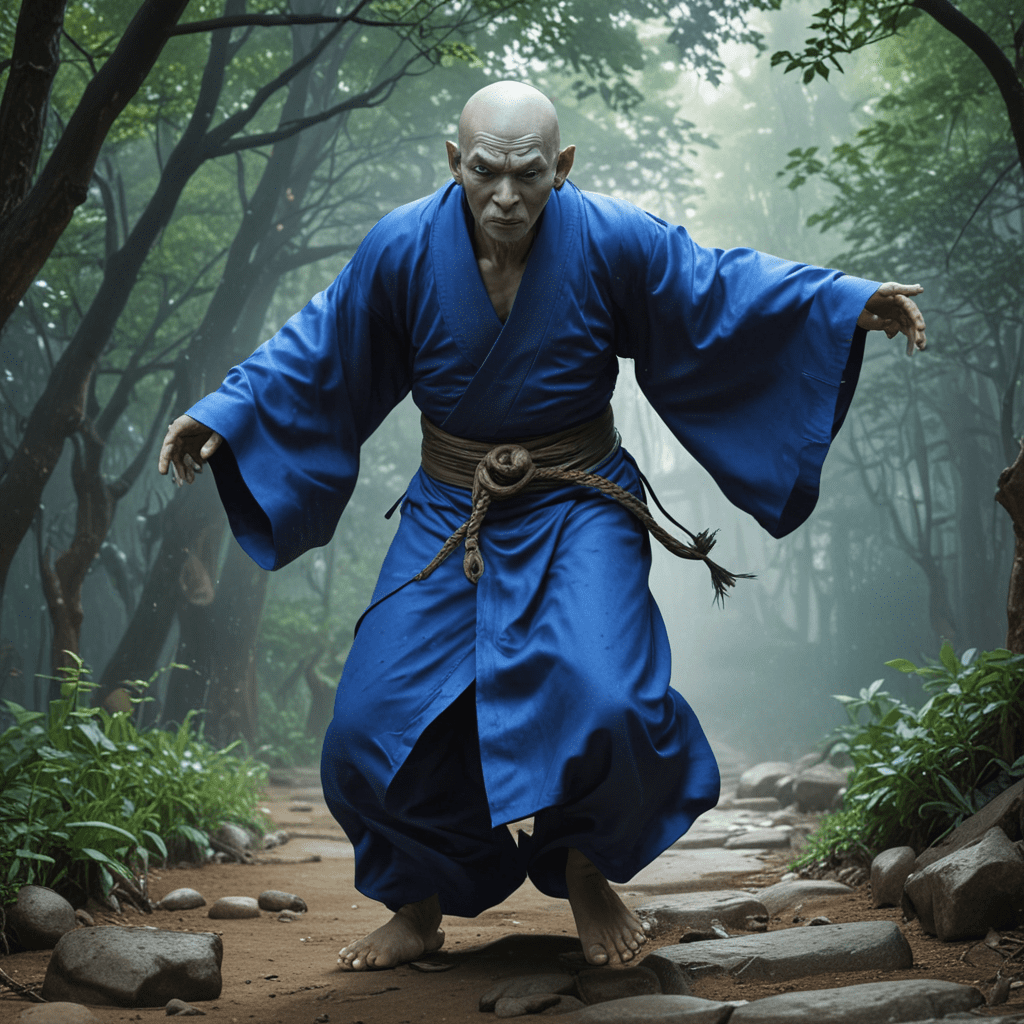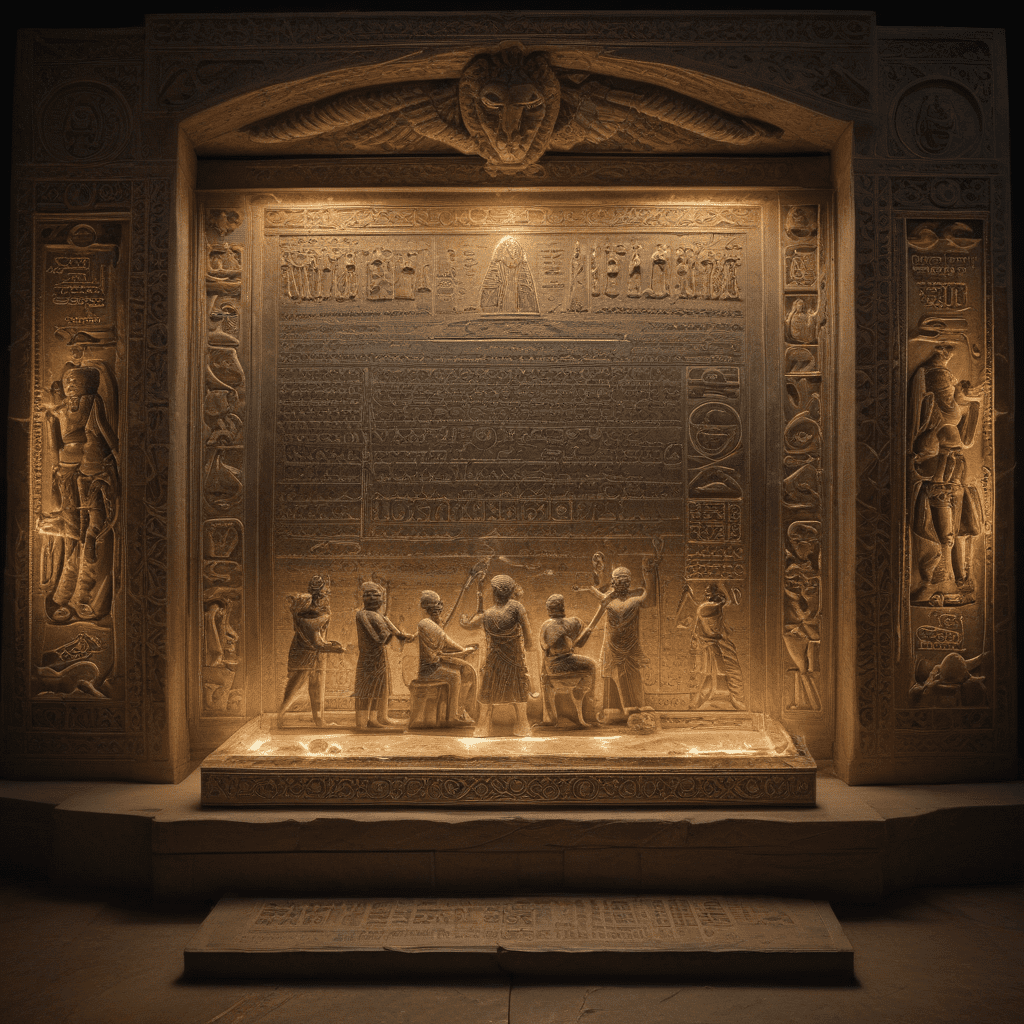The Myth of the Aobozu: The Blue Monk in Japanese Folktales
Introduction: The Aobozu Legend
The myth of the Aobozu, a solitary blue monk, has captivated the imaginations of Japanese people for centuries. This enigmatic figure is said to appear in the twilight and roam the shadows of ancient forests and deserted roads, inspiring fear and curiosity in equal measure. The Aobozu has become deeply ingrained in Japanese folklore, with countless tales and legends surrounding its enigmatic presence.
Origin and Description of the Aobozu
The origins of the Aobozu are shrouded in mystery, and there is no single definitive account of its creation. One popular theory suggests that it is the vengeful spirit of a monk who was unjustly punished or betrayed. Another version holds that the Aobozu is a guardian spirit, watching over travelers and protecting them from harm, though its solitary nature and chilling presence often cause more fear than comfort.
Physically, the Aobozu is typically depicted as a tall, slender monk with a deep blue face and body. Its eyes are often described as piercing and glowing, while its expression is said to be one of eternal sorrow or anger. The Aobozu is often portrayed wearing traditional monk's robes, and it is said to glide silently through the air, leaving no trace of its passage.
The Aobozu as a Solitary Spirit
One of the most distinctive characteristics of the Aobozu is its solitary nature. It is rarely encountered in groups or accompanied by other beings, and is known to prefer the company of its own thoughts. This isolation adds to its mystique and makes it both a feared and fascinating figure.
Despite its solitary existence, the Aobozu is said to have a deep connection to the natural world. It is often encountered near rivers or in forests, and is said to have a particular affinity for old trees. Some believe that the Aobozu represents the spirits of nature, watching over the land and protecting its secrets.
Regional Variations of the Aobozu Myth
The myth of the Aobozu has spread throughout Japan, and over time, regional variations have emerged. In some areas, the Aobozu is believed to be a malevolent spirit, responsible for causing harm or misfortune. In other regions, it is seen as a more benevolent figure, protecting travelers and warning people of danger.
One notable regional variation is the Aobouzu of Kyoto. This version of the Aobozu is said to be the spirit of a monk who was murdered by his brother. It is believed to haunt the streets of Kyoto, searching for revenge.
The Aobozu in Japanese Art and Literature
The Aobozu has been a popular subject of Japanese art and literature for centuries. It has been depicted in paintings, sculptures, and prints, often as a mysterious and enigmatic figure. The Aobozu has also appeared in numerous literary works, including famous novels and short stories.
One of the most famous depictions of the Aobozu is in the painting "The Blue Monk" by Tsukioka Yoshitoshi. This painting shows the Aobozu as a tall, slender figure with a deep blue face. It is depicted standing in a moonlit forest, its eyes glowing with an eerie blue light.
Psychological Interpretations of the Aobozu
Psychologists have offered various interpretations of the Aobozu, suggesting that it may represent different aspects of the human psyche. Some believe that it represents the fear of the unknown, while others suggest that it may symbolize feelings of guilt or shame.
The solitary nature of the Aobozu has also been interpreted as a reflection of the isolation and loneliness that can be experienced in modern society.
Cultural Significance of the Aobozu
The Aobozu has a deep cultural significance in Japan, and its image has been used in a variety of ways. It has been used to warn people of danger, to protect against evil spirits, and even to promote tourism.
The Aobozu is a reminder of the rich folklore and mythology that exists in Japan. It is a symbol of the unknown and the mysterious, and it continues to fascinate and inspire people to this day.
The Aobozu in Contemporary Japanese Society
The Aobozu remains a popular figure in contemporary Japanese society. It continues to appear in art, literature, and pop culture. The Aobozu has also become a popular subject of urban legends and paranormal investigations.
The Aobozu is a testament to the enduring power of myth and legend in Japan. It is a reminder that even in the modern world, there is still a place for the mysterious and the unknown.
FAQ
Q: What is the Aobozu?
A: The Aobozu is a solitary blue monk that appears in Japanese folklore. It is often depicted as a tall, slender figure with a deep blue face and piercing eyes.
Q: What is the origin of the Aobozu?
A: The origins of the Aobozu are shrouded in mystery. One popular theory suggests that it is the vengeful spirit of a monk who was unjustly punished or betrayed.
Q: What are some regional variations of the Aobozu myth?
A: The myth of the Aobozu has spread throughout Japan, and over time, regional variations have emerged. In some areas, the Aobozu is believed to be a malevolent spirit, while in other regions it is seen as a more benevolent figure.
Q: How is the Aobozu depicted in Japanese art and literature?
A: The Aobozu has been a popular subject of Japanese art and literature for centuries. It has been depicted in paintings, sculptures, and prints, often as a mysterious and enigmatic figure. The Aobozu has also appeared in numerous literary works, including famous novels and short stories.
Q: What is the cultural significance of the Aobozu?
A: The Aobozu has a deep cultural significance in Japan, and its image has been used in a variety of ways. It has been used to warn people of danger, to protect against evil spirits, and even to promote tourism.


